Pilates is a system of exercise that strengthens and lengthens the body through core work, spinal alignment, and breathing. Regular practice of Pilates has been shown to build lean muscle, improve flexibility and balance, prevent and rehabilitate from injury, reduce chronic pain, and improve mental health and wellbeing.
who it benefits
Pilates benefits people of all ages, conditions, and lifestyles.
Regular practice of Pilates has been shown to have particular benefits for:
- pregnant and postnatal women, by increasing pelvic floor muscle strength and endurance.
- seniors, by improving dynamic balance, lower limb strength, hip and lower back flexibility, and cardiovascular endurance.
- people recovering from injuries or struggling with chronic pain, by serving as an effective rehab tool - particularly in reducing pain and disability. A systematic review of 23 clinical studies demonstrated the efficacy of Pilates in the rehabilitation of low back pain, ankylosing spondylitis, multiple sclerosis, post-menopausal osteoporosis, non-structural scoliosis, hypertension and chronic neck pain.
- people living with depression, anxiety, or high stress, by improving mental health and quality of life.
- those looking to improve their fitness level or athletic performance, including runners - with studies demonstrating improved race performance and reduced risk of running-related injuries.
- anyone seeking to benefit from improved posture and alignment.
what to expect
Pilates can be done on a yoga mat or on machines that use springs for tension.
In Pilates there is the notion of fewer, more precise movements, favoring control and technique over increased repetitions. Pilates uses correct alignment, centering, control, concentration, precision, breath and the flow of movement to establish an efficient working body from the inside out.
There is an overall emphasis on the core—the area between your shoulders and pelvis, and the muscles that encompass this area. Special attention is paid to using a variety of muscle contractions to create balance and symmetry in the body—it is a whole body workout.
The benefits you will gain long, lean overall muscle tone that doesn’t create bulk, are unlike any other type of exercise.
When you leave a Pilates class you will not leave feeling tired and depleted, but rather focused, lengthened, and invigorated!
origin
Pilates, originally known as “contrology” was developed in the early 20th century by a German man named Joseph Pilates. His inspiration included martial arts, acrobatics, and yoga, and he developed Pilates to promote physical fitness, rehabilitation, and mind-body connection.
He evolved his method by teaching a wide variety of students over time, including Scotland Yard detectives, fellow World War I internment camp prisoners, and professional dancers. After emigrating to the United States in the 1920s, he and his wife Clara trained students in their New York City studio.
Several of their students, known as “elders” helped spread the practice of Pilates around the world by opening their own studios and expanding access to a broader range of students and practitioners. Pilates is now practiced across the globe, with over 10 million students in the United States alone!
“
[Pilates} is the complete coordination of the body, mind, and spirit. It is designed to give you suppleness, natural grace, and skill that will be unmistakably reflected in the way you walk, play, and work.
-Joseph Pilates

